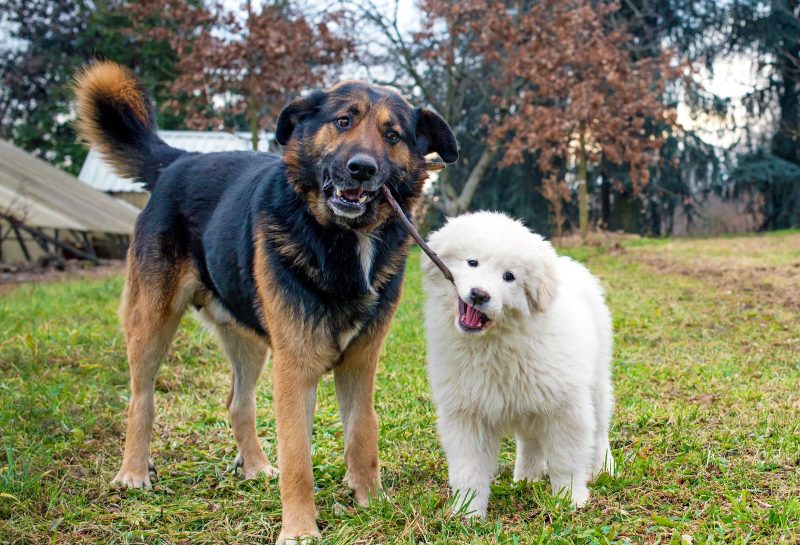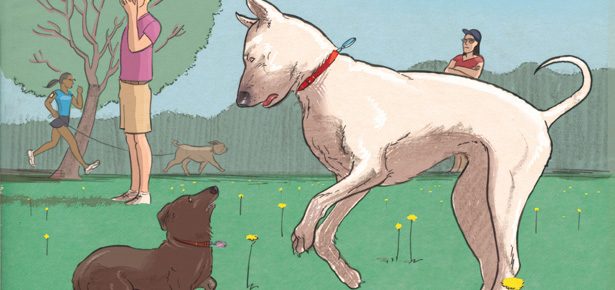

How to Get Your Dog to Listen
Easy tips to teach your dog to listen and respond when spoken to
Your dog’s paws are on the kitchen counter, and he’s thinking that your sandwich looks like lunch—for him. You tell him to leave it. Does he?
You’re on a hiking trail when you spy a large mud puddle ahead. You signal to your dog to walk with you around it. Does he?
In these scenarios would your dog listen? Would he leave the sandwich alone and skirt around the puddle? Or would you end up lunchless and muddy? There are countless scenarios in which a lack of response could cause problems. Some might only cause inconvenience, while others could end in serious injury or worse. So how does one teach the basic skill of getting a dog to listen? It’s all about conditioning.
The first step is to be able to get your dog’s attention. Let’s face it, if you can’t get his attention you’re not going to be able to get a solid recall, interrupt a potential skirmish or anything else. Attention means that when you call your dog’s name he looks at you as if to say, Yes? What would you like? To teach the skill, stand facing your dog with your dog sitting facing you. Hold some treats in one hand but have both hands behind your back. Don’t call your dog, waggle your eyebrows, or otherwise solicit his gaze. Just wait. At the exact moment he makes eye contact, say, “Yes!” (or click if you’re using a clicker) and treat. Repeat until he’s obviously gotten the idea. You’ll know—he’ll be staring a hole in you!
Next, with the same starting position, keep the majority of treats in one hand behind your back and a single treat in the other hand. Move the hand with the single treat from behind your back slowly out to the side until your arm is fully extended parallel to the floor. Don’t look at your dog until your arm is fully extended—you want your dog’s gaze to follow the treat out to the side and THEN capture the moment when his head swings back to look at you. Wait silently. When his eyes dart back to you, even for a split second, mark the moment verbally or with the clicker and give a treat.
“Dogs rely more on watching our movements than what comes out of our mouths, so use that to your advantage.”
Notice you haven’t said a word yet! With further repetitions, once you can predict that your dog will look back at you quickly after visually tracking the treat out to the side, extend the arm and then immediately call his name. Mark and treat for eye contact. Repeat. You are conditioning the response of your dog looking at you when he hears his name. Next, practice outside of training sessions as well by calling your dog’s name when he’s not distracted. Build up gradually to calling his name when he’s more distracted, such as in outdoor situations.
Conditioning your dog to listen by responding to his name is one thing. But what about the way you interact with him in daily life? Does he ignore your verbal cues, even if he knows what they mean? One mistake some owners make is to repeat an ignored verbal cue more loudly. Trust me, your dog can hear a potato chip hit the carpet in the next room! He heard you the first time. The answer lies in establishing consequences. For example, you’re about to take your dog for a walk. You ask him to sit and stay before opening the door. But when the door is partway open, he stands. Do you keep going? No! Close the door and ask for another sit-stay. Be consistent in your consequences, and you’ll be surprised at how quickly your dog’s listening skills improve.
Make sure, too, that you’re clear and concise when speaking to your dog. Saying, “Buddy, sit!” is more likely to garner compliance than, “Come on, Buddy, be a good boy and sit!” Don’t say your dog’s name all the time, either, if you want him to listen when you need him to do something. If you do, he’ll habituate and learn to tune you out. Remember to use hand signals as well as verbal cues. Dogs rely more on watching our movements than what comes out of our mouths, so use that to your advantage.
This may sound like a lot of things to do and pay attention to, but it’s really not. With a bit of training, conditioning, and patience, you’ll soon have a very good listener!
Join the newsletter and never miss out on dog content again!
"*" indicates required fields
By clicking the arrow, you agree to our web Terms of Use and Privacy & Cookie Policy. Easy unsubscribe links are provided in every email.





